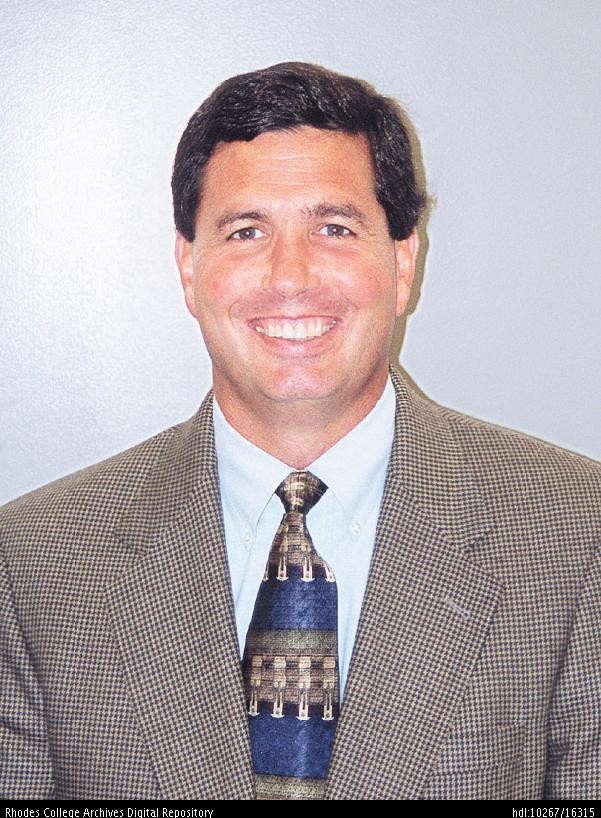Rhodes College versus the University of Tennessee in football? Not a chance, but the idea of a small liberal arts college playing a Southeastern Conference powerhouse is not far-fetched.
Last year, Wofford College, an academic powerhouse in South Carolina, with 1,549 students, played SEC bully South Carolina, coached by Steve Spurrier, and lost 24-7. This year, Samford University in Birmingham, with 2,750 students, will play Arkansas.
Granted, there’s a special factor in each case. Wofford’s big donor is alumnus Jerry Richardson, a former NFL player and owner of the Carolina Panthers. And Samford is in Alabama, cradle of SEC football and home of the annual “Media Days” lollapalooza in which a thousand or so sportswriters compete to find the most trivia.
But when I saw the new light poles on the almost-new artificial-turf field at NCAA Division III Rhodes, I called athletic director Mike Clary just to see what’s up. “I’ve been associated with this college for 39 of the last 41 years and have never entertained any thought of playing at any other level,” he said. “Doing something that would be more expensive and more of a cultural change from our academic and athletic balance is just not something we would ever do.”

Mike Clary
That doesn’t mean Rhodes (1,808 students) and other members of the Southern Athletic Association are isolated from changes in the college football universe. The Rhodes 2013 schedule includes the University of Chicago, whose football claim to fame is winning the 1905 national championship and giving up the sport in 1939. Also on the schedule are Claremont-Mudd-Scripps in California; Berry College and Hendrix College, which will be fielding teams for the first time; and Birmingham-Southern, which pulled a Chicago in 1939 and brought back football in 2007. Off the schedule is Colorado College, which dropped football in 2009.
What the schools have in common is no athletic scholarships and the ability to make the claim that their average SAT score is larger than their enrollment.
Here are excerpts of my interview with Clary. Lest anyone think he was talking out of school, data on athletic department budgets is public information at http://ope.ed.gov/athletics/.
How did Chicago get on the schedule?
Mike Clary: Chicago and Washington University in St. Louis compete in all sports and struggled the last seven or eight years to get a schedule because so many Division III schools belong to a league. We accepted Chicago as an affiliate football member in 2015 and play them at home this year and away in 2014.
Why Claremont and the travel expense?
We struggled with this. In our old conference, we had to fly to San Antonio to play Trinity every other year. With them off the schedule, we can use those funds to fly to California to play Claremont and Pomona in 2014. With 75 people at $450 a ticket, it’s about $32,000.
Why the lights on the field?
As our enrollment has increased, we have more afternoon and evening classes. Lights minimize conflicts with classes and science labs. We had been asking donors for several years and finally were able to get a gift. The cost was about $350,000. They will mainly be used for practices when time changes in late October. In the future, we will probably play Claremont at night, since they have to stay over. Normally, schools at our level don’t play at night because they drive to games and if the game is over at 10 o’clock, they don’t get home until the next morning.
What do you think about small schools playing big ones?
Every year, I hear from someone at those smaller schools asking about our budget. In a perfect world, they would like to be more like Rhodes, but the external pressure is just astronomical. Wofford has about 100 players, and tuition and expenses are about the same as here. Our average grant for our 100 football players is around $15,000, whether academic or need-based. So we’re spending about $1.6 million.
(Note: According to public reports for 2011-2012, Rhodes spent $454,000 on football, Wofford $3.6 million, Samford $5 million, the University of Memphis $13 million, and the University of Tennessee $19.8 million.)
Is football necessary to attract male students?
Of our 550 first-year students, 200 will be varsity athletes, including 55 football players. We could recruit our student body if we didn’t have football, but we like the dynamic it brings to the Rhodes community.